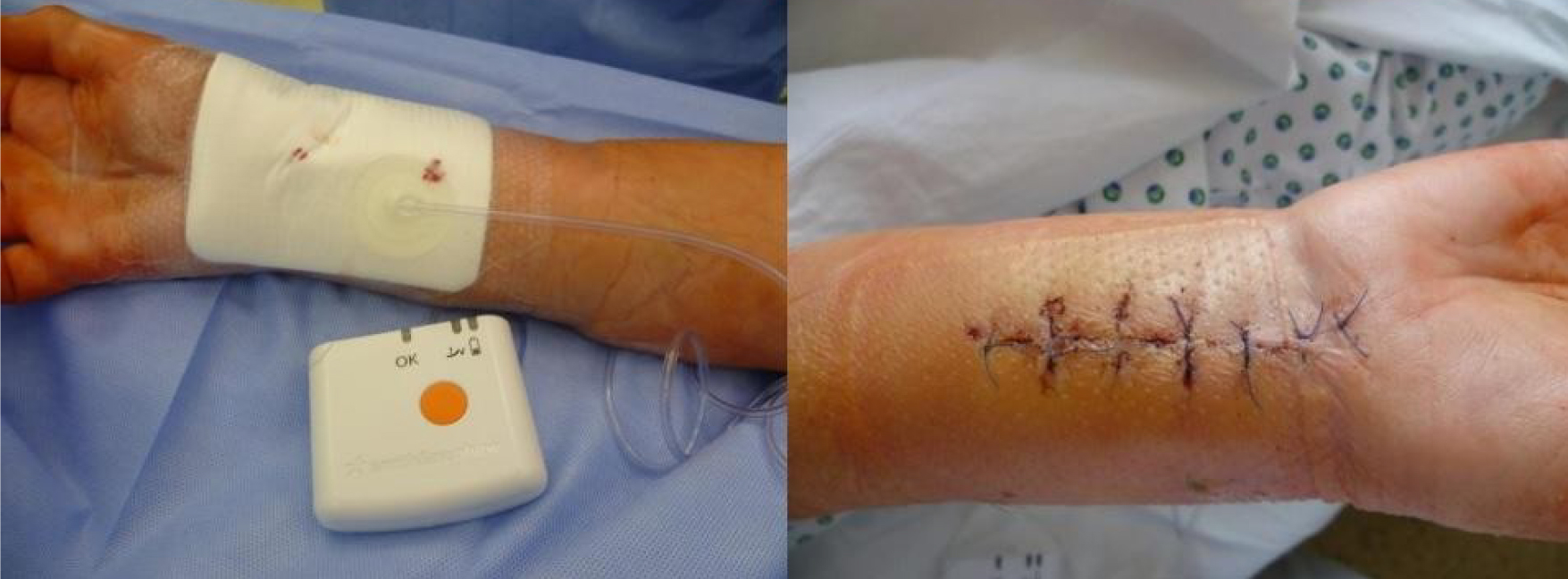Management of distal radius fractures using closed-incision negative pressure wound therapy. Retrospective study.
Abstract
Abstract— Background: Negative pressure wound therapy
has proven to be an ecient tool in the provision of temporary
wound coverage in cases where definitive primary wound
coverage is impossible. This initial achievement led to the use
of NPWT as an incisional dressing in wounds that could be
primarily closed, but posing high risk due to the amount of
soft-tissue injury, location of the fracture, or high BMI.
Distal radius fracture is one of the most common injuries,
especially in elderly patients. Typically, fractures occur in the
osteoporotic bone as a result of low-energy trauma. Conservative
treatment is still dominant in the management of distal
radius fractures. In general, displaced unstable fractures or
fractures that fail conservative treatment are indicated for
surgical therapy. In our study, we present ten-year-experience
of distal radius fracture management at our department.
Methods: Detailed analysis of retrospective data obtained
from the hospital information system was carried out. The
study included patients operated on at our department from
January 1, 2010, to December 31, 2019. We evaluated age,
gender, surgical approach, complications, and implant removal.
Results: in total, 207 patients were evaluated, women to
men ratio was 2:1 (144:63 cases). The mean age was 56 years
(women 62 years, men 45 years). Volar surgical approach with
volar locking plate osteosynthesis predominated (199 cases). The
complication rate was 10% with implant-associated complications
being the most common (3.7%). The implant removal rate
was 17%. No surgical site infection (SSI) was detected. Closed
incision negative pressure therapy (ciNPT) was applied in highrisk
wounds.
Conclusion: Volar locking plate osteosynthesis is a method
of choice with a low complication rate. Implant removal is not
routinely indicated. Preventive application of ciNPT is beneficial
in high-risk wounds, but diagnosis of fracture of the distal
forearm according to the occurrence in our analysis is not
essential for preventive use of NPWT, since the incidence of
wound infection, in high-risk patients, is extremely low.

Copyright (c) 2021 Jakub Habr, Michal Reška, Jan Konečný, Michal Kašpar, Roman Hasara, Lenka Veverková

This work is licensed under a Creative Commons Attribution 4.0 International License.
Authors who publish with this journal agree to the following terms:
- Authors retain copyright and grant the journal right of first publication with the work simultaneously licensed under a Creative Commons Attribution License that allows others to share the work with an acknowledgement of the work's authorship and initial publication in this journal.
- Authors are able to enter into separate, additional contractual arrangements for the non-exclusive distribution of the journal's published version of the work (e.g., post it to an institutional repository or publish it in a book), with an acknowledgement of its initial publication in this journal.
- Authors are permitted and encouraged to post their work online (e.g., in institutional repositories or on their website) prior to and during the submission process, as it can lead to productive exchanges, as well as earlier and greater citation of published work (See The Effect of Open Access).
We require authors to sign a Publication Agreement prior to publication of the manuscript in NPWTJ. The link to this form may be found below.
PUBLICATION AGREEMENT FORM











